PHYSICIAN'S MICROSCOPE
(2nd version):
c. 1878
Signed on the body tube: Bausch & Lomb
Optical Co. Rochester N.Y.
Serial Number: None
Author and Collection of: Dr Barry Sobel
Editor: Dr Joseph Zeligs
DESCRIPTION
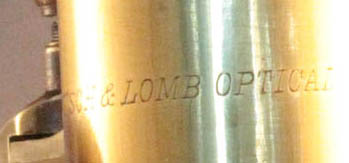
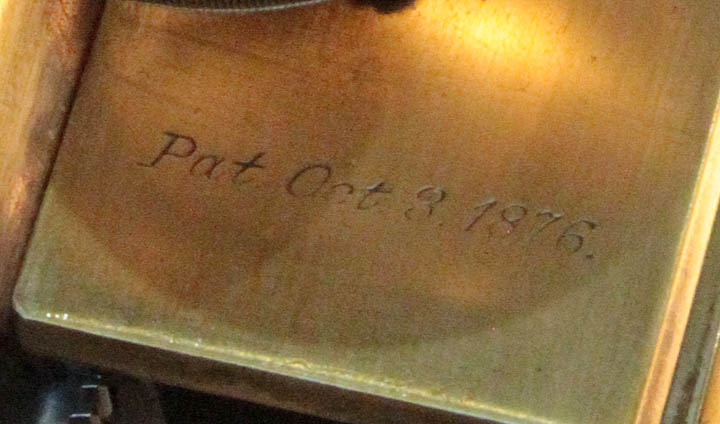
 This Bausch & Lomb's
This Bausch & Lomb's Physicians Microscope
is the second form, made from about 1878 to 1883. It stands about 12 inches high in a position suitable for use. It is signed on the lacquered brass optical tube Bausch & Lomb Optical Co Rochester NY
. The arm plate enclosing the coarse focus pinion is engraved Pat. Oct 3. 1876.
which refers to Gundlach's patent of that date featuring the fine focus mechanism of this microscope. In addition, the silvered brass slide holder is engraved PAT. DEC 25 '77
.
The microscope sits on an ornate Gundlach-style black enameled foot. From this a single pillar arises to the saddle-type inclination joint. Under the glass stage is a brass plate and the two together are screwed into the support which is part of the solid cast limb. Unlike the later version of this microscope, the glass stage is not engraved. The brass plate under the glass has a cylinder soldered to its bottom to accept accessories, such as the condenser that came with this microscope. The cylinder has an inside diameter of about 20 mm.
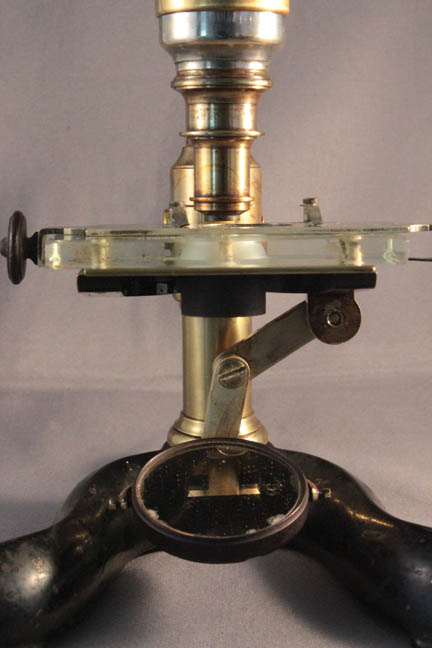 The gimbaled mirror, flat on one side and concave on the other, is attached to the left side of the bottom of the stage via a two piece articulation.
The gimbaled mirror, flat on one side and concave on the other, is attached to the left side of the bottom of the stage via a two piece articulation.
ACCESSORIES:
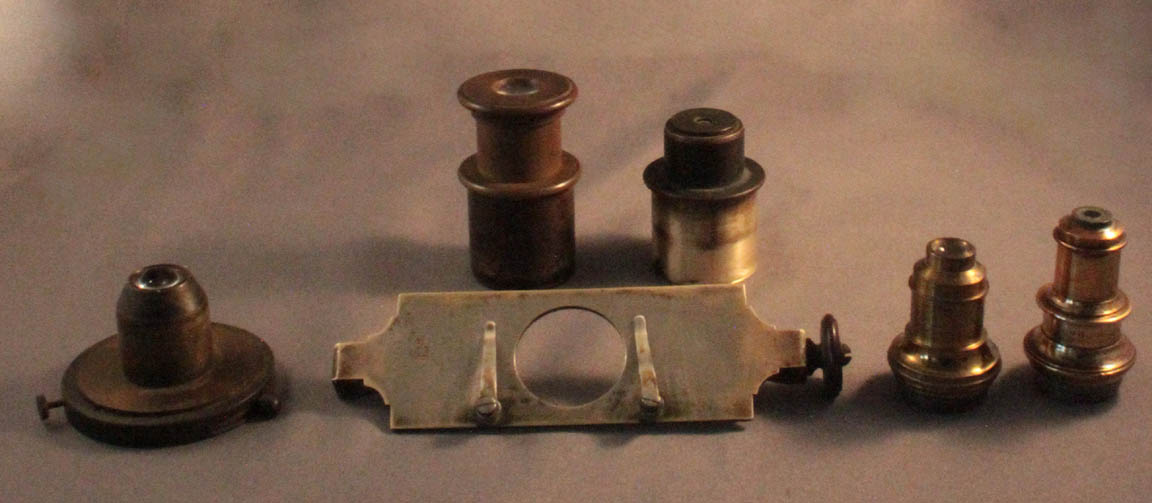
- Two
top hat type
eyepieces, one made of hard rubber* and one of metal but the latter one missing its top hat
cap.
- Two lacquered brass B & L objectives, of 3/4 and 1/5 inch focal length, in hard rubber cans
- A silvered slide holder with hard rubber knob on right side, left side knob missing
- An optical condenser fitting into the substage sleeve, with detachable iris diphragm in a hard rubber casing.
CONDITION:
When this microscope came to me it was in very poor condition with extensive tarnish and several parts were not working properly. The entire microscope was repaired and refinished to the extent needed to remove unsightly tarnish and verdigris. It is now in fair working condition, with some parts simply cleaned rather than completely refinished, to preserve its antique nature. Care was taken to preserve the machining lines and original character of the instrument.
HISTORY:
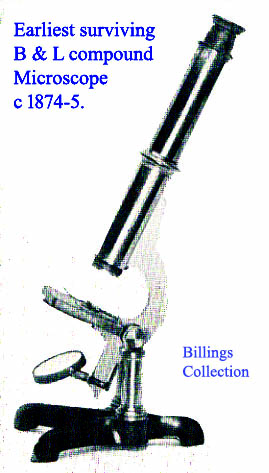 B & L started to produce microscopes in 1874, and the earliest surviving B & L compound microscope stand we are aware of is pictured here to the right.
B & L started to produce microscopes in 1874, and the earliest surviving B & L compound microscope stand we are aware of is pictured here to the right.
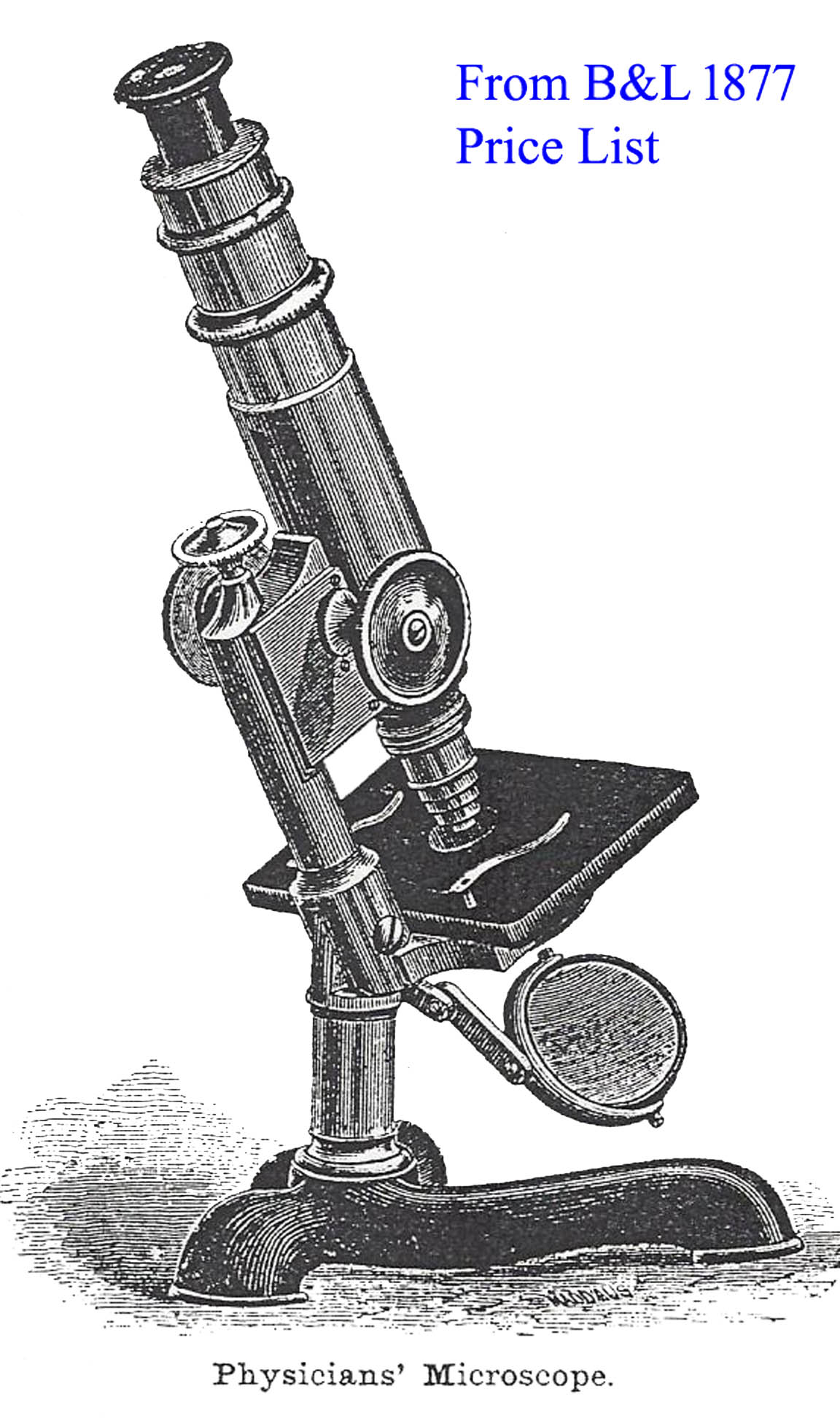 The earliest engravings of B & L stands date to about 1876, when they exhibited during the centenial exhibition in Philadelphia. The earliest version of the Physician's microscope(left) also dates to 1876, and through 1879 and had a hard rubber stage.
The earliest engravings of B & L stands date to about 1876, when they exhibited during the centenial exhibition in Philadelphia. The earliest version of the Physician's microscope(left) also dates to 1876, and through 1879 and had a hard rubber stage.
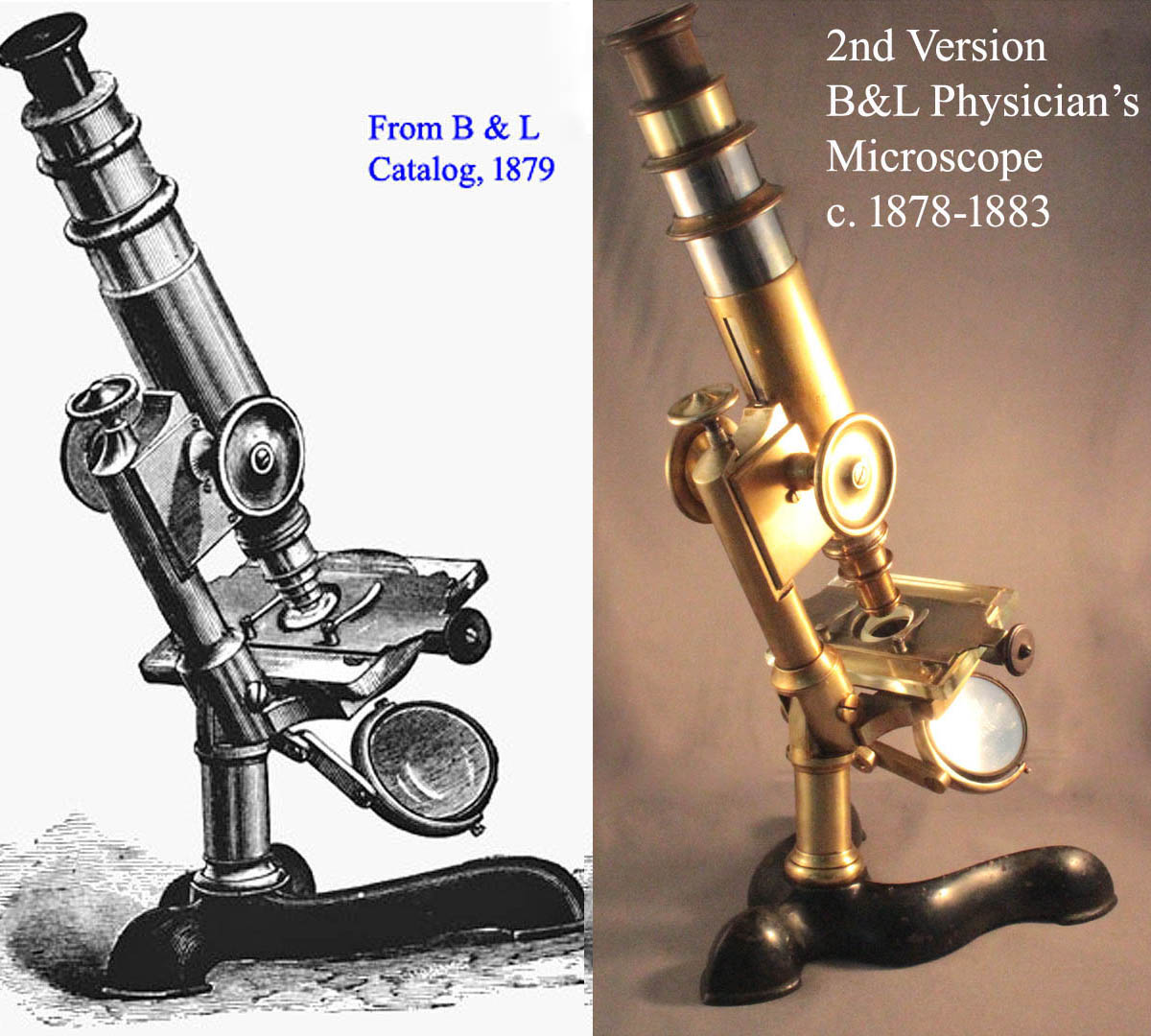 In 1878, while the first version was still being sold, the second version of the Physician's microscope(left) was released and had a glass stage with knobs on the sides of the slide-holder. This microscope is featured above on this web page.
In 1878, while the first version was still being sold, the second version of the Physician's microscope(left) was released and had a glass stage with knobs on the sides of the slide-holder. This microscope is featured above on this web page.
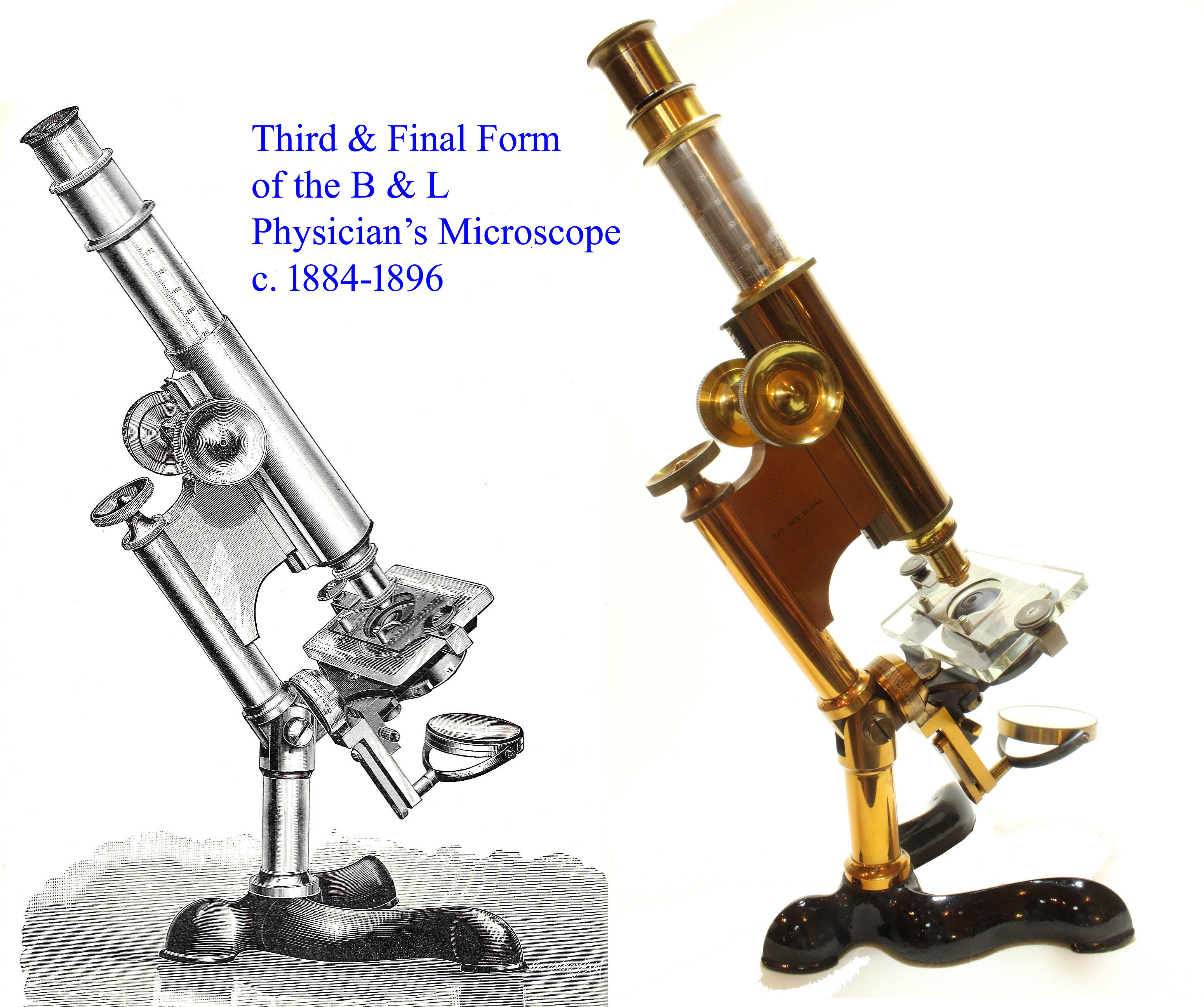 The last version of the Physician's microscope, left, was first advertised in 1884. Unlike the second version which had the knobs on the sides of the slide holder, the third version has its knobs on top of the slide holder, and had the addition of a calibrated swinging substage. In addition, the glass stage of the final version was etched with the name of the company. The last version of the Physician's model was made until at least 1896. The final form of that microscope, made in the last year of manufacture is the example shown on this website. This last version includes a fitting on the tailpiece for a full-size condenser, a late addition to the stand. All the Physician's models are relatively uncommon. The instrument was a bit expensive in its day, and for this reason, ironically, a stand not often popular among physicians.
The last version of the Physician's microscope, left, was first advertised in 1884. Unlike the second version which had the knobs on the sides of the slide holder, the third version has its knobs on top of the slide holder, and had the addition of a calibrated swinging substage. In addition, the glass stage of the final version was etched with the name of the company. The last version of the Physician's model was made until at least 1896. The final form of that microscope, made in the last year of manufacture is the example shown on this website. This last version includes a fitting on the tailpiece for a full-size condenser, a late addition to the stand. All the Physician's models are relatively uncommon. The instrument was a bit expensive in its day, and for this reason, ironically, a stand not often popular among physicians.
*Hardened rubber was often called Vulcanite as it was hardened with sulfur at high temperature in the process known as vulcanization.


 This Bausch & Lomb's
This Bausch & Lomb's  The gimbaled mirror, flat on one side and concave on the other, is attached to the left side of the bottom of the stage via a two piece articulation.
The gimbaled mirror, flat on one side and concave on the other, is attached to the left side of the bottom of the stage via a two piece articulation. 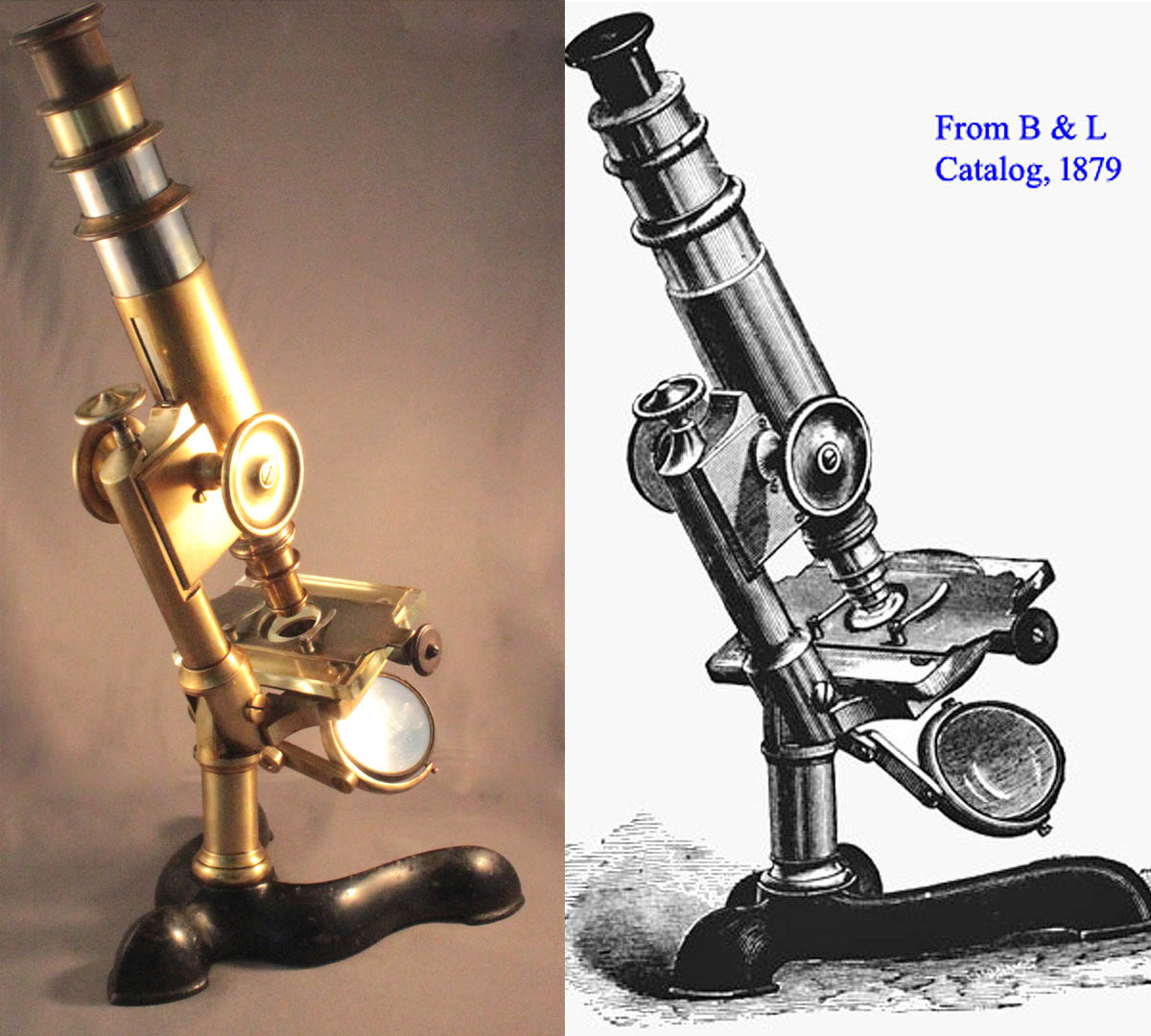

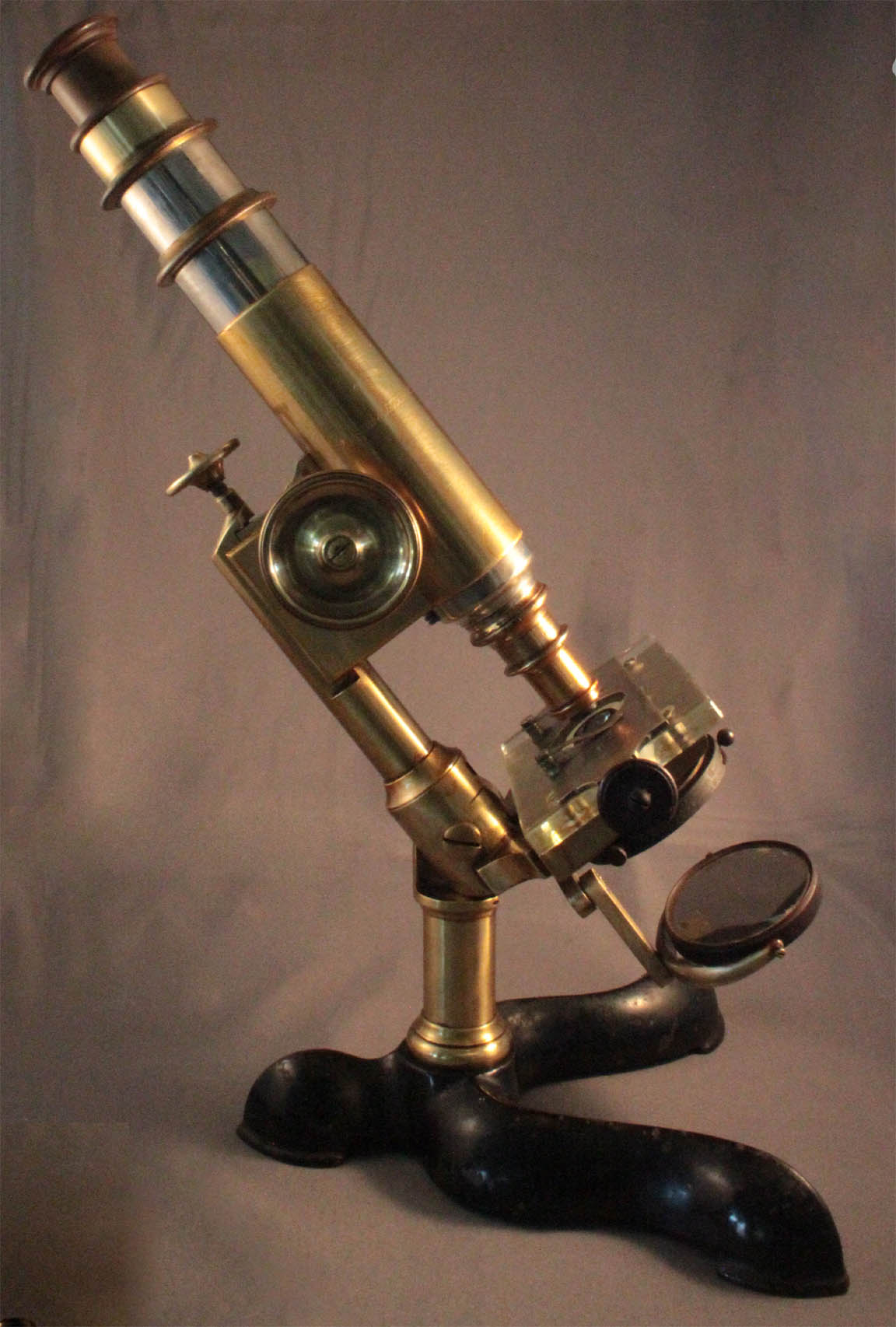
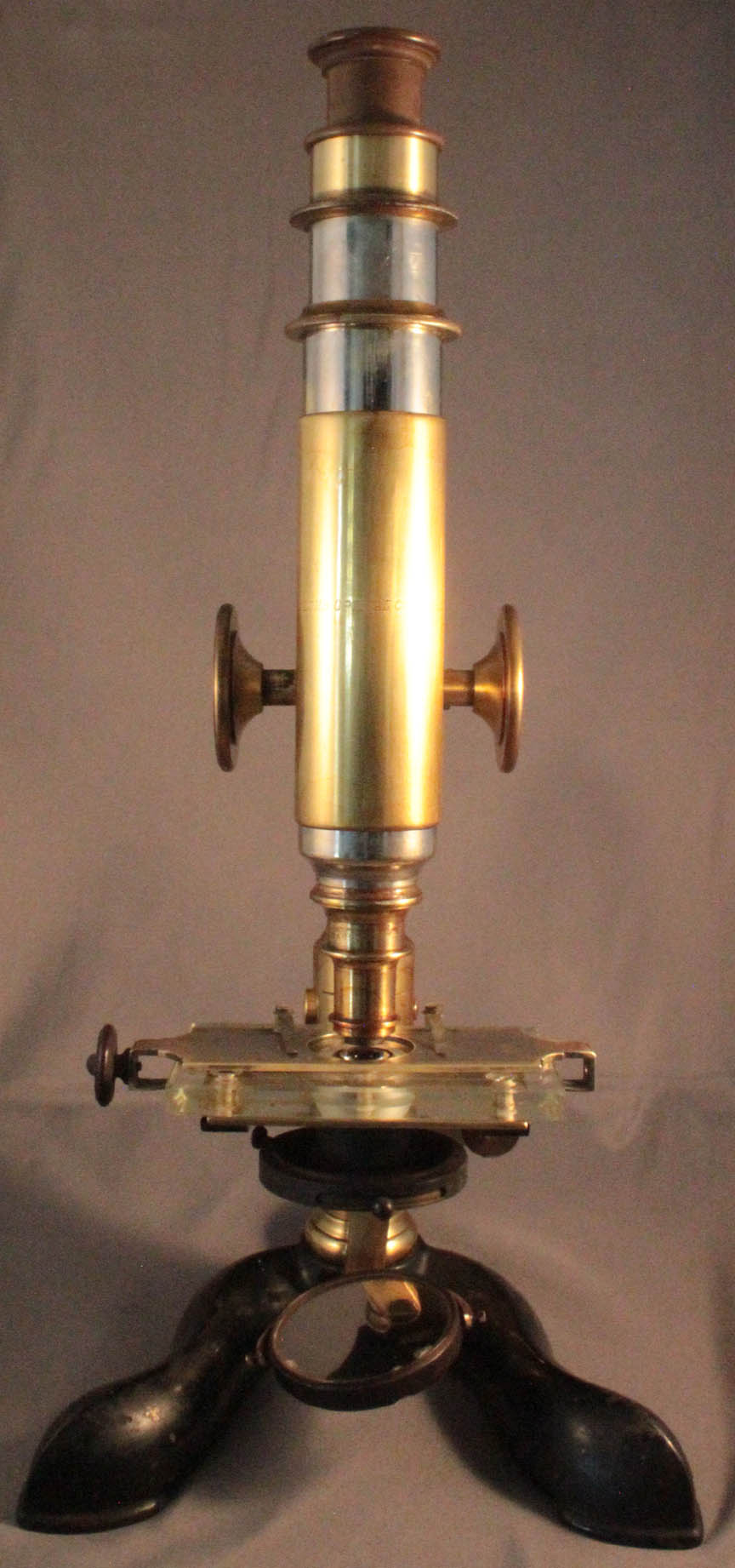

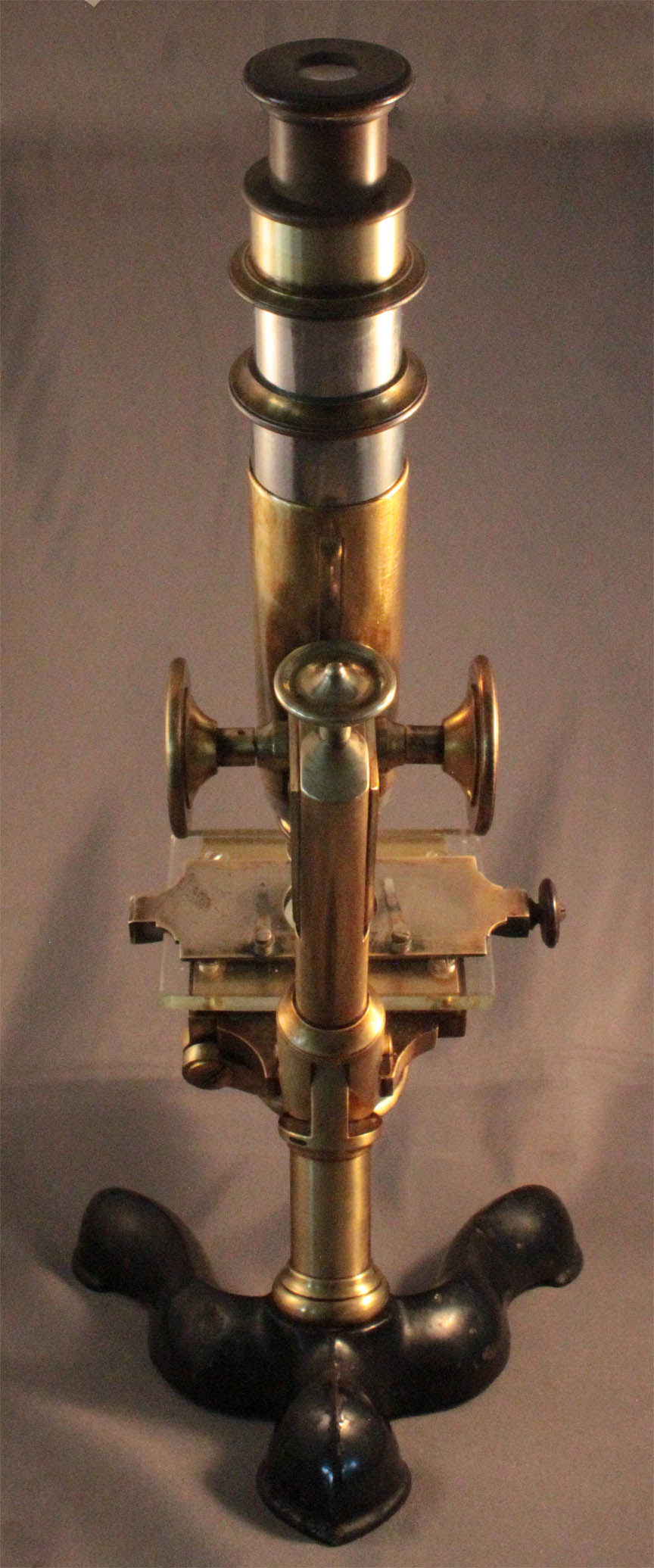


 In 1878, while the first version was still being sold, the second version of the Physician's microscope(left) was released and had a glass stage with knobs on the sides of the slide-holder. This microscope is featured above on this web page.
In 1878, while the first version was still being sold, the second version of the Physician's microscope(left) was released and had a glass stage with knobs on the sides of the slide-holder. This microscope is featured above on this web page. 